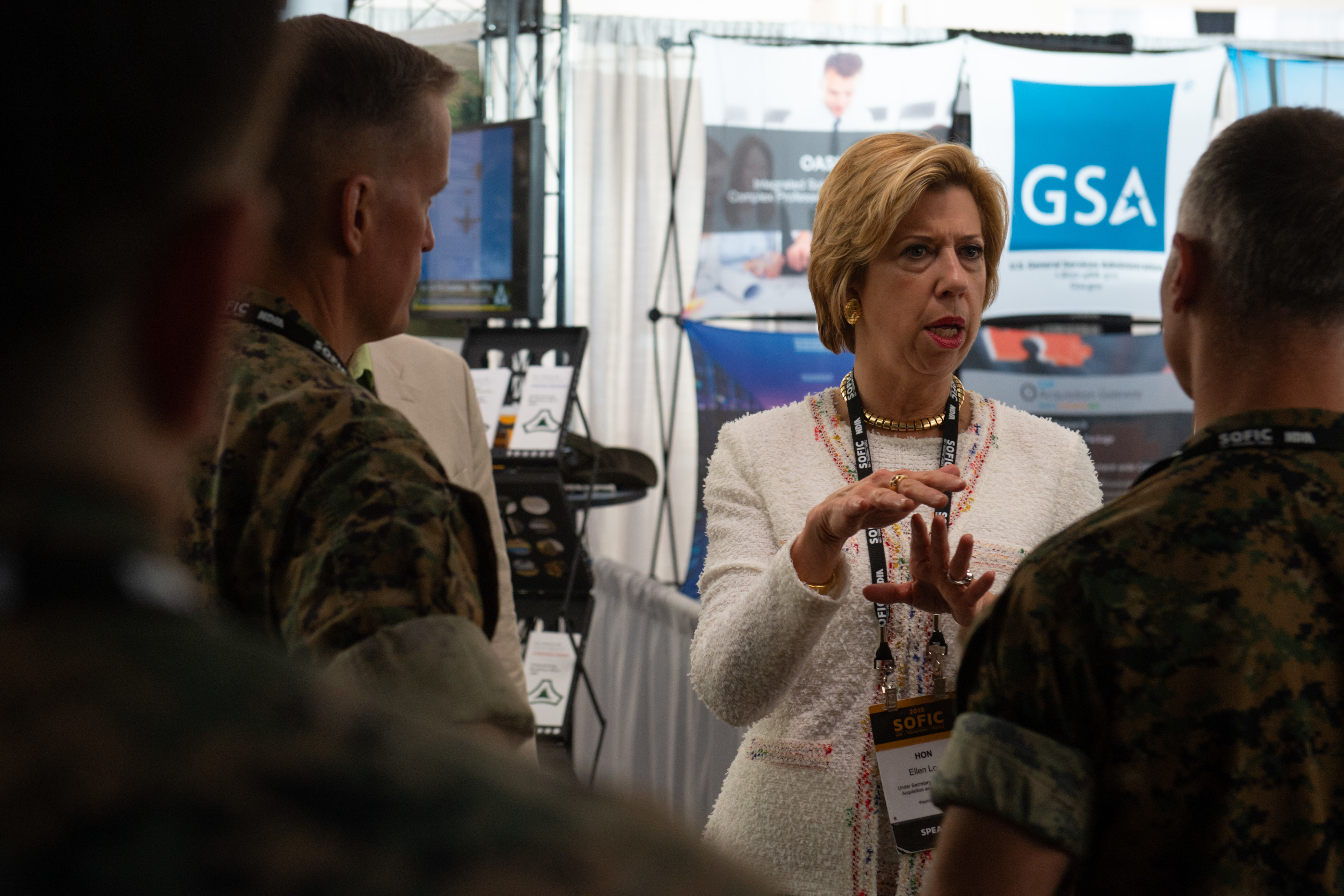
Ellen Lord at the Special Operations Forces Industry Conference.
WASHINGTON: The Pentagon is looking for almost double what it originally estimated it needed to pump into the defense industry to cover costs due to COVID-19 disruptions, the military’s top acquisition official said today.
Ellen Lord, the Pentagon’s acquisition chief, said today she could be looking for as much as $20 billion in emergency funding, up from the $11 billion estimated just last month to reimburse defense firms for lost work hours and disrupted supply chains.
That potentially higher topline would cover costs incurred between March and September. However, Congress has yet to allocate any new funding, and Lord warned, even if they do, it could take six months for any of that money to reach small parts manufacturers who may be struggling.
Despite the $2 trillion CARES Act COVID relief package passed in March, lawmakers apparently haven’t appropriated any money for the Defense Department, and Congress is only in session for about three more weeks until it leaves town for the final month of the election cycle.
Lord said that once the money is appropriated, companies would have to provide justifications to the DoD about where it would go, and then decisions would be made.
“So, we would get all of that [information] back,” before doling out the cash, Lord said. “We think that would take two to three months. Then we want to look at all of the proposals at once. It isn’t going to be a first in/first out” process, she said. “We have to rationalize using the rules we’ve put in place, what would be reimbursable and what’s not. So overall we think five to six months in terms of a process.”
In August, a DoD analysis leaked that showed leaders were looking at about $11 billion in emergency aid. According to that, the Navy was slated to take the brunt of the COVID slowdown hit. The document asked Congress to fund the services for unforeseen expenses to the tune of $4.7 billion for the Navy, $4.3 billion for the Air Force; $1.1 billion for the Army; $594 million for the Missile Defense Agency; and $190 million for the Special Operations Command.
“We believe we need that appropriation to maintain readiness because, if we do not get that, what we are going to find is we are not going to get the number of units delivered,” Lord said. “We are not going to maintain warfighter readiness. We’re not going to move forward in modernization.”
But months of positive earnings reports from the big players in the defense industry have led to some questions about how much help the defense industry really needs. Lord pushed back when questioned, saying enough time hasn’t elapsed to truly understand the full cost of work slowdowns and broken supply chains.
“There have been mixed reports in terms of revenue and profitability, but I would contend that most of the effects of COVID haven’t yet been seen because most companies gave their employees time off, she added
In July, CEOs from the nation’s top defense firms wrote a letter to Lord pleading for billions in relief for work slowdowns and supply chain disruptions during the COVID crisis. The CEOs wrote that US-based supply chains “are simply not able to absorb these significant costs. Without additional funding in the next stimulus package, the resolution of [reimbursement] claims will need to be funded from existing DoD budget topline resources for FY20-22.”
In order to keep the smaller suppliers afloat, companies have pushed contracts forward to give the smaller supplier more work, and in turn, DoD has sped up planned payments to the defense industry, pushing past the $2 billion mark in recent weeks.
In a Taiwan conflict, tough choices could come for Big Tech
Washington could do more to incentivize tech companies to distance themselves from China, but CEOs should examine how they’d react to a fight in the Pacific, CSET’s Sam Bresnick and Emelia Probasco argue.


























